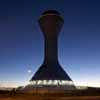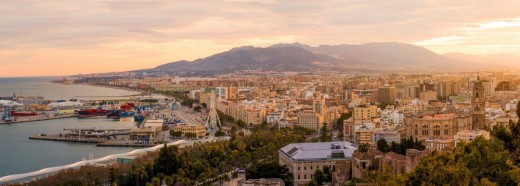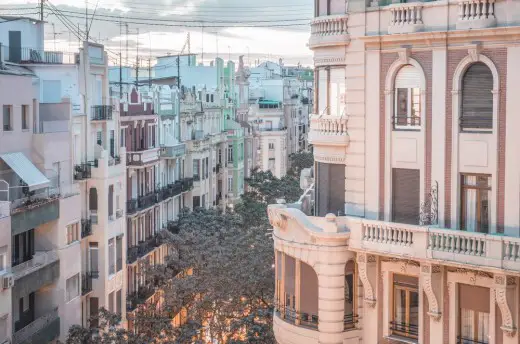Costa de Valencia Architecture Guide, Spanish Real Estate Tips, East Spain Property Advice
Costa de Valencia Architecture
15 Dec 2020
Costa de Valencia real estate is famous for showcasing the influence of the city’s rich cultures and civilisations in its architecture. With highlights on its history and the inclusion of modern architecture, the European city makes for an interesting real-life visual design setting.
A stroll through the streets of Costa de Valencia surrounded by a vortex of architectural styles found in its various building styles and structures will transport you through the eras. The view is so captivating that it will leave you wondering about the coexistence of its cultural and urban real estate.
Best Costa de Valencia Architectures
Stretching from Castellón de la Plana in the north to Denia in the south, Costa de Valencia has much to offer to its visitors and residents. From artistically styled structures to wide sandy beaches, a visit to this European city makes for a delightful treat in itself. Let’s have a look at some of the best architecturally beautiful structures in Costa de Valencia:
The Palace of the Marquis of Dos Aguas
An impressively designed museum, the Palace of the Marquis of Dos Aguas was built in the 15th century and improved in the 18th and 19th centuries. Initially built with a Gothic sense which is still highlighted in its room designs, the museum was remodelled to include the Baroque styled ornate entryway and ornate balconies in the later centuries.
The opulent doorway is bordered by allegorical alabaster statues, and a life-size figure of the Virgin of the Rosary is placed in an alcove above. The building houses some of the nation’s best ceramic collections, even Pablo Picasso’s work.
Lonja de la Seda
Designed according to Gothic architecture, the monument is considered the city’s main monument and was also selected by UNESCO as one of ‘Humanity’s Heritage’. Its architectural importance lies in its Tower, its Contracts Room, its courtyard of the Orange Trees – Patio de los Naranjos, and its Consulado del Mar room.
Dating back to the 15th century, Lonja de la Seda is known as ‘The Silk Market’ for its history of silk exchange. The monument, designed as Mediaeval fortress, has a large main hall with intriguing carvings that offers its visitors a look into the early Renaissance period.
El Miguelete
The Torre del Miguelete is another magnificent monument that deserves mention in the city’s architectural discussions. The structure dates back to the 14th and 15th centuries. It is famous for treating its visitors with the best panoramic visuals of the region and the waterbody.
The significance of the structure lies in its Gothic style eight-sided bell dangling on its top and the spirally designed steps, of over 200 leading to the point of the visuals. The monument also highlights Baroque and Roman architectural styles.
City of Arts and Sciences
Also called the Ciutat de les Arts i les Ciències, the City of Arts and Sciences is one of the most iconic structures in the city with its design based on futuristic architecture. Santiago Calatrava, an architect from Spain, is attributed for this wonder showcasing a complex amalgamation of iron and glass structures along with white concrete that are accessible via raised paths sided by water pools on either side.
Estación del Norte
Dating to the 20th century and considered as one the country’s most magnificent train stations, the Estacion del Norte will leave you awestruck with its architectural designs. A masterpiece designed by Demetrio Ribes, the station blends the Viennese Secession style with the historical and cultural aspects of the region.
On entering the building, one finds the interior to be as impressive as the outside structure, visible in its intricately designed ticketing wood counters and its carved ceilings.
Casa Judía
A major portion of Valencia’s architectural fascination lies in the richly designed structures it houses. With a masterpiece at every turn, another major visual delight is the Casa Judía. What’s surprising is the fact that the structure is neither a museum nor a monument, it’s an apartment building for people to live in.
The structure captivates you with its intricate and artistic work of display of shapes and colours, connecting the styles of Art Deco and neo-Egyptian architectures. The Star of David sits above the front door of the building.
Costa de Valencia Architecture – Conclusion
Costa del Valencia is no doubt one of the best tourist destinations for families, friends, and individuals. From its urban environment to some of the nation’s most intriguing historical landmarks, Costa del Valencia offers ample recreation to its visitors and residents. Moreover, according to Sergey Sinyugin, CEO of Virto Property, Costa del Valencia is also an advantageous option for real estate investment.
Renting an apartment in the city is just as easy. Its coastline has some of the finest beaches with the ultimate relaxation experience. For architecture and adventure lovers, the city boasts of several opulent museums, monuments, parks, and other structures offering a look into the city’s rich cultural past along with a vision of its future.
Comments on this Costa de Valencia Architecture guide article are welcome.
Edinburgh Architecture
Edinburgh Airport, north west of the city

image from Reid Architecture
Edinburgh Airport
Comments / photos for the Costa de Valencia Architecture help – Eastern Spanish Real Estate guide page welcome






